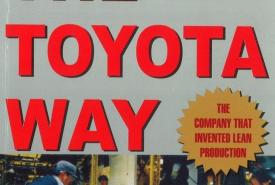‘The Toyota way’ by Jeffrey K. Liker is about Toyota’s unique approach to Lean Management. To create a learning enterprise, Liker describes 14 management principles an organization should embrace. These 14 principles are divided and discussed using a 4P model: Philosophy, Process, People & Partners and Problem Solving. This article will focus on the second part of the book, in which each of the four P’s are described in a section with the underlying principles that fit within that category. The 14 principles are shortly described at the end of this article.
I would recommend this book to all managers who want to change their organization into a Lean organization. Liker explains that the worldly known Toyota Production System (TPS) is not only about the tools, which fit only the Process part of the 4P model, but also about culture. Without going in to much detail on how the organization should facilitate change, Liker describes very clearly what should be done in order to succeed.





